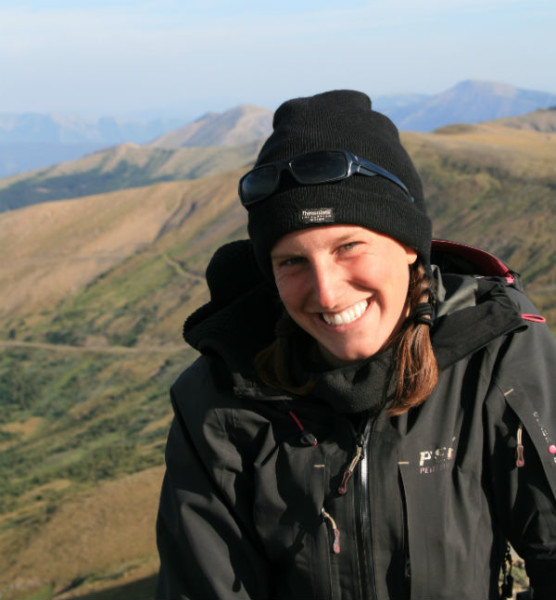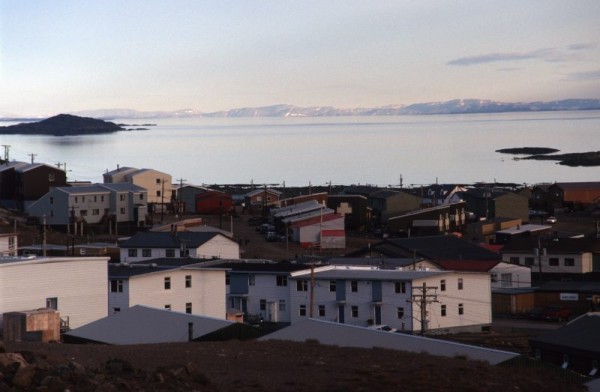North Stars: WWF’s Arctic Wildlife biologist turns research into action
Science and traditional knowledge mix well to ensure environment and economy flourish in the North
Rachel Theoret-Gosselin lives in Iqaluit, Nunavut and leads WWF-Canada’s conservation projects and community engagement for the Last Ice Area – the high Arctic Archipelago where summer sea ice will last the longest in the face of climate change. You can support Theoret-Gosselin’s work with communities and marine and land conservation by supporting WWF’s Arctic Home campaign. Donate before March 31, 2016, and you will have double the impact thanks to an anonymous donor who is matching all donations up to $137,000. Please donate now.

Name: Rachel Theoret-Gosselin
Age: 30
Number of years in the Arctic: Two
What is your area of Arctic research expertise?
Rachel: I knew I wanted to focus on animals from a very young age, so I studied wildlife biology as an undergrad at McGill University and as a graduate student at the University of Laval. My master’s research was on maternal behavior in mountain goats and the survival of their kids in the Rocky Mountains of Alberta. While technically sub-arctic, the cold and treeless tundra and alpine habitat was very similar to what you find in the Arctic.
I moved to Iqaluit with my partner after finishing my graduate degree and was living here for about a year before I started working with WWF. Living in Iqaluit is special. The pace of life is different from the south. Everything is simpler. But, also more complicated.
What do you like about living in the North?
Rachel: I love the tundra environment so much. It may seem bleak, but when you stop and take your time to look around, the smell and colours are astounding. Living in Iqaluit, the tundra and the bay are right in your backyard. Nature is right here.

Can you share an experience that demonstrates some of the more challenging aspects of life in northern communities?
Rachel: I find the darkness challenging. I’m a sun person, so in the summer I have no problem having the sun all night long. But in the winter, that quick glimpse of sun between 10 and 2 is not enough.
From a community perspective, some structures or services are not fully established. For example, because of slow internet connections many services and organizations don’t have websites, so you have to know someone who knows someone to get what you are looking for. As a mother of two kids, one of my biggest challenges was finding childcare services. The daycare waiting lists are really long – as they are in many parts of Canada. The waits here are as much as four to five years long. That’s not realistic, so you have to make your own options.
What are you working on with WWF?
As a biologist, it’s a dream to work for WWF. While in school I was always on the academic and research side and I yearned to apply research to achieve results. That’s what I like about WWF – we combine the research and action.
One of my main projects is to support the environmental concerns and actions of northern communities. Often, when new development decisions are being made, community members aren’t given the tools to understand the threats and risks. WWF can help communities achieve a balance between economic development and healthy environment by helping them prepare input for community meetings.
An example of this is the community consultations that are taking place in Chesterfield Inlet on shipping for a nearby mine. Community members have observed a reduction in marine mammals in the area as shipping has increased. WWF is working with them to both map the areas they know are important and to develop the scientific research that will help them evaluate the benefits and risks of industrial development in the region.
Science can give communities more authority in these negotiations, but there is an incredibly important role for traditional knowledge in decision-making. Scientific studies in the north are mostly done in the summer and are often short-term. But people are on the land all the time. Inuit aren’t afraid of cold or darkness. They’ve been around for a thousand years. They have seen the cycles and seasons, and have a knowledge of patterns that science has not had the opportunity to observe and document yet. We can use Inuit knowledge to help explain patterns that science cannot yet explain.
By relying on both traditional knowledge and scientific research we can ensure that the most sensitive areas are protected, to ensure that important new economic opportunities can co-exist with ecosystems, species and communities that have been here for millennia.
Read the previous North Stars post about WWF’s northernmost researcher.
